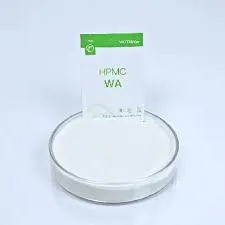
Dec . 15, 2024 17:52 Back to list
hpmc chemical structure
Understanding the Chemical Structure of HPMC A Deep Dive
Hydroxypropyl methylcellulose (HPMC) is a widely used polymer in various industries, particularly in pharmaceuticals, food, and construction, owing to its unique chemical structure and properties. Understanding the chemical structure of HPMC provides insights into its functionality, applications, and the ways it can be manipulated for specific uses.
What is HPMC?
HPMC is a non-ionic, multipurpose cellulose ether derived from natural cellulose through a series of chemical modifications. It is created by the substitution of the hydroxyl (–OH) groups of the cellulose molecule with hydroxypropyl and methyl groups. This modification enhances the water solubility and the thermal stability of cellulose, making HPMC an invaluable compound in many formulations.
The Chemical Structure of HPMC
At its core, HPMC retains the backbone structure of cellulose, which consists of glucose units linked together by β(1→4) glycosidic bonds. The molecular formula of cellulose is (C6H10O5)n, where 'n' indicates the number of repeated units. In HPMC, the natural hydroxyl groups (-OH) on the cellulose backbone are partially replaced with hydroxypropyl (-C3H7OH) and methyl (-CH3) groups.
The extent of substitution of hydroxyl groups affects the properties of HPMC significantly. The ratio of hydroxypropyl to methyl groups can vary, leading to classifications of HPMC based on its viscosity, solubility, and gel-forming abilities. The typical substitutions involve around 10-30% hydroxypropyl content and 20-30% methyl content, which contribute to the overall functionality of HPMC.
Properties Influenced by its Chemical Structure
1. Water Solubility The presence of hydroxypropyl groups enhances the hydrophilic nature of HPMC, allowing it to dissolve readily in water. This characteristic is crucial for applications where thickening or gelling is required, such as in pharmaceutical formulations where HPMC serves as a matrix for controlled drug release.
hpmc chemical structure

2. Viscosity The viscosity of an HPMC solution can be tailored by adjusting the degree of substitution and the concentration of the polymer. This property is particularly important in applications such as suspensions and emulsions, where consistent viscosity impacts product stability.
3. Gel Formation HPMC can undergo gelation when exposed to heat or specific pH levels, providing versatility in different environments. This property is extensively utilized in food products, where it acts as a gelling agent and stabilizer.
4. Thermal Stability HPMC demonstrates excellent thermal stability due to its modified structure. This is advantageous in applications involving high temperatures, such as in construction materials like cement and mortar, where HPMC acts as a water-retention agent.
Applications of HPMC
Given its unique properties stemming from its chemical structure, HPMC finds numerous applications across various industries
- Pharmaceuticals HPMC is used as a binder, film-forming agent, and controlled-release polymer in tablets and capsules, enhancing drug solubility and bioavailability. - Food Industry In food products, HPMC acts as a thickener, emulsifier, and stabilizer, improving texture and quality in items such as sauces, ice creams, and baked goods. - Construction In the construction industry, HPMC enhances the workability of dry mortar mixes, improves water retention, and helps in achieving stronger adhesion in cement applications.
Conclusion
The chemical structure of HPMC plays a pivotal role in defining its versatile applications and properties. Its unique combination of functional groups allows for modifications that enhance its usability across different sectors. As research continues to explore new applications and formulations, HPMC remains a vital ingredient in many contemporary products, solidifying its importance in modern science and industry. With its roots in natural cellulose, HPMC exemplifies how chemical modifications can lead to significant advancements in material properties, shaping the future of various fields.
-
Versatile Hpmc Uses in Different Industries
NewsJun.19,2025
-
Redispersible Powder's Role in Enhancing Durability of Construction Products
NewsJun.19,2025
-
Hydroxyethyl Cellulose Applications Driving Green Industrial Processes
NewsJun.19,2025
-
Exploring Different Redispersible Polymer Powder
NewsJun.19,2025
-
Choosing the Right Mortar Bonding Agent
NewsJun.19,2025
-
Applications and Significance of China Hpmc in Modern Industries
NewsJun.19,2025







